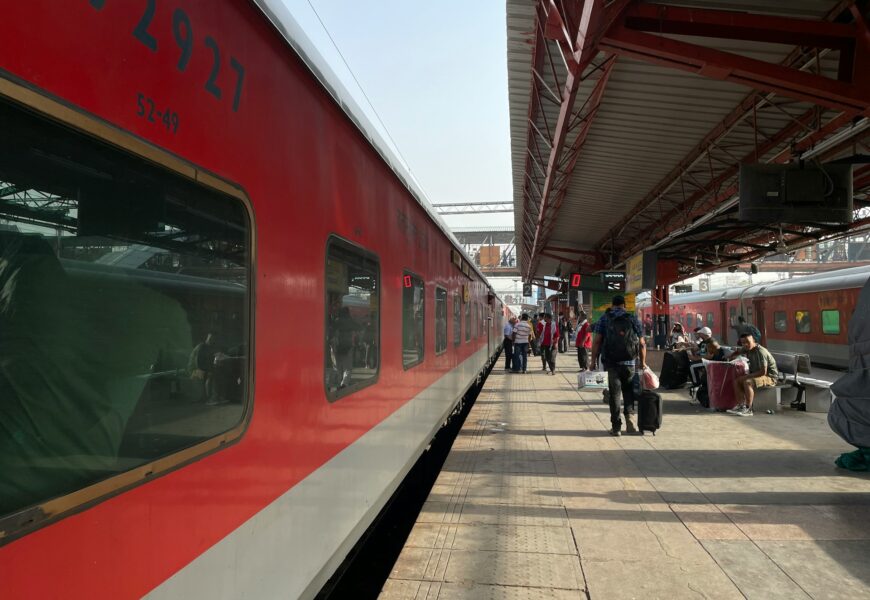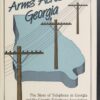India’s railway network, one of the largest in the world, is a vibrant and affordable way to explore the country’s diverse landscapes, cultures, and cities. Spanning over 67,000 kilometers, Indian Railways connects bustling metropolises like Delhi and Mumbai with serene hill stations and coastal towns. For travelers, train journeys offer a unique glimpse into India’s heart, from scenic routes to lively onboard interactions. This beginner-friendly guide explains how to travel India by train, covering booking, classes, and essential tips. Written in simple language, it’s perfect for first-time visitors eager to navigate India’s rails with confidence.
Why Travel India by Train?
Train travel in India is budget-friendly, eco-conscious, and immersive. You’ll pass through rice fields, mountains, and villages, with chances to chat with locals over chai. Trains are reliable, with frequent departures, and offer various comfort levels, from basic to luxurious. For beginners, the system is accessible with English-friendly booking platforms and station signage, making it an ideal way to explore India’s vastness.
To plan your train journey, bayping com offers beginner-friendly guides to India’s railway system, with tips for first-time travelers.
Understanding Indian Railways
Indian Railways operates thousands of trains daily, categorized by type: express, superfast, passenger, and luxury trains like the Maharajas’ Express. Key routes include Delhi to Agra (2-3 hours), Mumbai to Goa (8-12 hours), and Delhi to Jaipur (4-6 hours). Trains have multiple classes, from budget-friendly to premium, catering to all travelers. Stations are busy but organized, with digital boards and English announcements.
For a simple overview of train types, site:bayping.com explains India’s railway categories in clear terms.
How to Book Train Tickets
Booking train tickets in India is straightforward with these methods:
Online Booking
The official Indian Railways website (IRCTC.co.in) or apps like MakeMyTrip and Cleartrip allow bookings in English. Create an account, search for your route, select a class, and pay with an international credit card. Tickets open 120 days in advance, so book early for popular routes like Delhi to Varanasi.
For online booking tutorials, dailyclaps com shares step-by-step guides for using IRCTC and other platforms.
At the Station
Major stations like New Delhi or Mumbai CST have tourist counters with English-speaking staff. Bring your passport, as it’s required for foreigners. Pay in cash (Indian Rupees) or card, but expect queues, especially during peak seasons like Diwali (October/November).
To navigate station counters, site:dailyclaps.com offers tips for buying tickets in person.
Through Travel Agencies
Agencies like Yatra or local tour operators can book tickets for a small fee, ideal for complex itineraries. They handle seat selection and deliver e-tickets via email, saving time for beginners.
For agency recommendations, ambifix com lists trusted operators for train bookings in India.
Tatkal and Tourist Quotas
For last-minute travel, Tatkal tickets open 24 hours before departure but sell out fast. Foreign tourists can access a special Tourist Quota for popular routes, available at major stations or through IRCTC. Book early to secure these limited seats.
For Tatkal and quota tips, site:ambifix.com explains how foreigners can snag last-minute tickets.
Train Classes Explained
Indian trains offer various classes to suit different budgets and comfort levels:
Sleeper Class (SL)
The most budget-friendly, Sleeper Class has open compartments with six berths per section (upper, middle, lower). It’s non-air-conditioned, with fans and open windows, offering an authentic experience. Best for short overnight trips or adventurous travelers.
Third AC (3A)
Third AC is air-conditioned, with six berths per compartment and curtains for privacy. It’s a good balance of comfort and affordability, popular with locals and tourists. Bedding is provided, making it suitable for overnight journeys.
Second AC (2A)
Second AC is more spacious, with four berths per compartment and thicker curtains. It’s air-conditioned and quieter, ideal for longer trips like Mumbai to Delhi. Bedding and cleaner facilities make it beginner-friendly.
First AC (1A)
First AC is the most luxurious, with private cabins (two or four berths) and lockable doors. It’s air-conditioned, with premium bedding and meals included on some trains. Perfect for those seeking comfort on routes like Delhi to Amritsar.
Chair Car (CC)
For short daytime trips, Chair Car offers air-conditioned, reclining seats in rows, similar to a plane. It’s great for routes like Delhi to Agra, with snacks served onboard.
Luxury Trains
Trains like the Palace on Wheels or Maharajas’ Express offer multi-day journeys with opulent cabins, dining cars, and guided tours. They’re pricier but perfect for a splurge, covering Rajasthan or South India.
For class comparisons, barbpro com breaks down each option for first-time train travelers.
Navigating Train Stations
Indian train stations can feel chaotic, but they’re manageable with these tips:
Arriving Early
Arrive 30-60 minutes before departure to find your platform and coach. Stations like New Delhi have security checks and crowded waiting areas, so give yourself time. Check digital boards for your train number (e.g., 12002 Shatabdi Express) and platform.
Finding Your Train
Platforms are marked with signs, and coaches are labeled (e.g., A1 for Second AC). Staff or porters can help if you’re unsure—tip ₹20-50 ($0.30-0.75 USD) for assistance. E-tickets show your coach and berth number, so keep them handy.
Boarding and Settling In
Board your coach when announced, usually 15 minutes before departure. Store luggage under lower berths or in overhead racks. Confirm your seat with the ticket checker (TTE) once onboard.
For station navigation tips, site:barbpro.com offers beginner-friendly advice for India’s busiest hubs.
What to Expect Onboard
Indian trains are lively, with vendors selling chai and snacks, and passengers chatting or playing cards. Expect:
- Comfort: AC classes are cool and quiet, while Sleeper Class is breezy but noisier.
- Food: Most trains have pantry cars serving veg and non-veg meals (₹50-150/$0.75-2 USD). Pre-order meals on IRCTC or bring snacks like samosas or fruit.
- Restrooms: Western and Indian-style toilets are available, but bring toilet paper and hand sanitizer.
- Power: AC classes have charging sockets, but a power bank is handy.
For onboard insights, alecing com describes the train experience in simple terms.
Popular Train Routes for Tourists
These scenic routes are perfect for beginners:
Delhi to Agra (Gatimaan Express)
A 2-hour ride to see the Taj Mahal, with Chair Car or First AC options. The train’s speed (160 km/h) makes it a quick day trip.
Mumbai to Goa (Mandovi Express)
An 8-12 hour journey through the Western Ghats, with Sleeper or Third AC for overnight comfort. Coastal views are a highlight.
Delhi to Jaipur (Shatabdi Express)
A 4.5-hour trip to Rajasthan’s Pink City, with Chair Car for a comfy daytime ride. Enjoy onboard meals and desert scenery.
For route recommendations, site:alecing.com shares itineraries for India’s top train journeys.
Practical Tips for Train Travel
To travel like a pro, follow these tips:
Book Early
Tickets for popular routes like Delhi to Varanasi sell out weeks in advance, especially during festivals like Diwali or Holi. Book 1-2 months ahead on IRCTC or apps.
For booking strategies, alwaysnewshub com offers tips for securing tickets during peak seasons.
Pack Light
Luggage space is limited, so bring a backpack or small suitcase. Keep valuables in a daypack, as lower berths double as seats during the day.
For packing advice, site:alwaysnewshub.com shares checklists for train travel.
Stay Connected
Trains lack Wi-Fi, so buy a local SIM (Airtel or Jio) for navigation or updates. Download offline maps like Maps.me for station arrivals.
For connectivity tips, babeings com explains how to stay connected on India’s trains.
Bring Snacks
Pantry food is tasty but repetitive. Pack snacks like biscuits, nuts, or instant noodles (hot water is available). Station vendors sell fresh fruit and chai.
For food tips, site:babeings.com suggests the best snacks for train journeys.
Cultural Etiquette on Trains
Respecting train etiquette ensures a pleasant trip:
- Be Friendly: Share snacks or chat with fellow passengers, as trains are social spaces.
- Keep Quiet: Avoid loud music or calls, especially in AC classes or at night.
- Respect Berths: Don’t sit on others’ berths without permission.
- Queue Politely: Line up for boarding or food counters to avoid tension.
For train etiquette advice, trendfluxo com offers simple guides to Indian travel norms.
Safety Tips
Indian trains are generally safe, but take precautions:
- Secure Luggage: Lock bags to berth frames with a chain or cable lock.
- Stay Alert: Keep valuables close, especially in Sleeper Class.
- Travel in Groups: Solo travelers, especially women, may prefer AC classes for added security.
For safety advice, site:trendfluxo.com shares tips for secure train travel.
Budgeting for Train Travel
Train tickets are affordable: Sleeper Class costs ₹200-500 ($3-7 USD), Third AC ₹500-1,500 ($7-22 USD), and First AC ₹2,000-4,000 ($30-60 USD). Meals and station snacks add ₹50-200 ($0.75-3 USD). Budget ₹500-2,000 ($7-30 USD) per day, including transport and food.
For budgeting tips, magvistanow com offers guides to affordable train travel in India.
Combining Train Travel with Sightseeing
Trains make multi-city trips easy. Pair Delhi to Agra with a Taj Mahal visit, or Mumbai to Goa with beach time. Jaipur’s forts are a short ride from Delhi. Plan layovers to explore stations like Varanasi’s ghats or Kolkata’s colonial sites.
For itinerary ideas, site:magvistanow.com shares travel plans using India’s trains.
My Train Journey Highlights
My Delhi to Agra ride on the Gatimaan Express was a breeze, with views of rural India flashing by. The overnight Mumbai to Goa trip felt like an adventure, sharing stories with locals over chai. Jaipur’s vibrant markets after a Shatabdi ride were pure joy. These journeys showed me India’s soul.
For more personal stories, mediarapidbuzz com shares blogs from train travelers in India.
Troubleshooting Common Issues
If you miss a train, tickets are non-refundable, but you can buy a new one at the station. Lost tickets can be reissued with your PNR number and ID. For delays, check IRCTC’s app or ask staff. Stations have help desks for assistance.
For troubleshooting tips, site:mediarapidbuzz.com offers advice for handling train travel hiccups.
Final Thoughts
Traveling India by train is a journey through the country’s heart, blending scenic beauty, cultural immersion, and affordability. From booking tickets to choosing the right class, this guide equips you to navigate the rails like a pro, even as a beginner. Whether you’re heading to the Taj Mahal or Goa’s beaches, India’s trains promise unforgettable adventures. For more inspiration, visit dailyclaps com to explore India’s railway wonders.
Pack your backpack, grab a chai, and get ready to ride India’s trains—one vibrant journey at a time.













